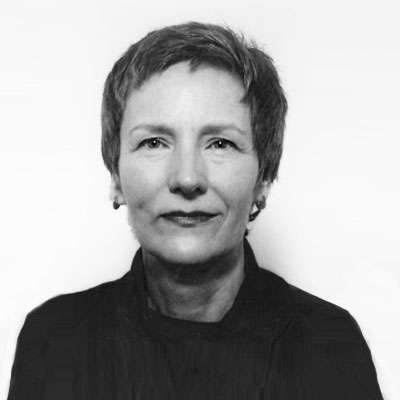Complexes and Jungian Archetypes, By Marcus West
‘Complexes are in truth the living units of the unconscious psyche …’
(Jung, CW 8, para 210)
Introduction
The term ‘complex’ was one of Jung’s earliest contributions to depth psychology. The concept has not only proved useful in psychology, and played a role in bringing Jung and Freud together for a time, but has passed into everyday language. From his word association experiments, the concept of the complex led Jung on to his understanding of archetypes and thus, together, these concepts have served as a foundation stone for his psychological theories. The concepts of both complexes and archetypes have undergone a good deal of development, sometimes being more and sometimes less taken up within the world of Jungian theory and analysis.
The concept of the complex has come full circle and can now be seen to be vitally relevant to the work with trauma and in particular early relational trauma, which is coming to be understood, particularly through the work of neuroscientists and specialist trauma researchers, as central to our psychological development and the difficulties and psychopathologies that can develop.
The concept of the archetype has had a long, rich, sometimes conflictual and checkered history, with whole schools of psychology becoming based on its use – for example, the school of Archetypal Psychology founded by James Hillman; whilst in some other schools, or at least for some members of those schools, it has, at times, played a much less significant role. The question of how and whether archetypes, archetypal ideas or archetypal dispositions are transmitted from one individual or one generation to another has been a particular source of conflict, as will be discussed below. A modern view of archetypes, much taken up within the SAP, is to understand archetypes as ’emergent’ principles that come out of experiences that are common to all of us through our natural, early human experiences.
This brief introduction to complexes and archetypes will first explore the origins of the concept of the complex before looking at how the concept of archetypes grew from it.
Word association experiments
When he was at the Burghölzli Hospital Jung began working on word association experiments with a number of colleagues. In these experiments the subject was asked to respond with the first word that came to their mind to a list of 100 words; words such as bread, table, war, ink, love, dog, head, faithful, water, stroke, and lamp. When the subjects had completed the list they were also asked to recall what responses they had given. Their responses were noted, including the time to respond, as well as emotional and physiological responses (the latter measured with a psychogalvonometer, which measured the skin’s electrical conductivity). If the response time was particularly long, or the associated word was uncommon, nonsense, not remembered on recall, or accompanied by particular emotions, Jung considered this a ‘complex indicator’ and a sign of an unconscious psychological conflict.
Jung had read, and been much impressed by, Freud’s book The Interpretation of Dreams, and he felt that the word association experiments provided direct evidence of the kind of unconscious conflicts that Freud was describing. Jung thus contacted Freud (in 1906) who was similarly impressed that these complexes supported his new and (then) radical and controversial theories, and thus a period of fruitful collaboration between the two men began.
Tragedy and trauma – one of Jung’s examples
Jung gives an excellent example of a powerful complex at work in his autobiographical memoir, Memories, Dreams, Reflections (p. 135 ff.). There he describes a young woman who was admitted to hospital with ‘melancholia’ (what we would now call depression) but, after examination, had been diagnosed with schizophrenia. Jung conducted his word association tests on her, listened to her story and her dreams and came to a different conclusion.
This attractive young woman had some years previously been romantically interested in the son of a wealthy industrialist, but believing he did not return her affections she had married someone else and had had two children. Five years later an old friend was visiting who told her that her marriage had been a great shock to this young man who had, it now emerged, had feelings for her. At that moment her depression set in. Worse was to follow however as, when bathing her children a few weeks later, being preoccupied with her dark and unhappy thoughts, she had allowed her daughter to suck on a sponge laden with bathwater – the water used for bathing in that area was not safe to drink. The young girl fell ill with typhoid and died; she had been her mother’s favourite. At this point her depression became acute and she was admitted to hospital.
From the word association tests Jung had ascertained that the young woman felt she was a murderer and felt extremely guilty about what she had done, as well as grieving her losses. As it was early on in his career he was very wary about putting this to his patient for fear that it might make her worse, however he resolved to do so and told her what he had found. Jung reports that, ‘the result was that in two weeks it proved possible to discharge her, and she was never again institutionalised’ (Memories, Dreams, Reflections, p. 137).
The power of complexes in psychology
As Jung puts it in his ‘Review of Complex Theory’,
‘Everyone knows nowadays that people ‘have complexes’. What is not so well known, though far more important theoretically, is that complexes can have us. The existence of complexes throws serious doubt on the naïve assumption of the unity of consciousness, which is equated with ‘psyche’, and on the supremacy of the will. Every constellation of a complex postulates a disturbed state of consciousness …. The complex must therefore be a psychic factor which, in terms of energy, possesses a value that sometimes exceeds that of our conscious intentions … And in fact, an active complex puts us momentarily under a state of duress, of compulsive thinking and acting, for which under certain conditions the only appropriate term would be the judicial concept of diminished responsibility’ (CW 8, para 200).
He continues,
‘a ‘feeling-toned complex’ … is the image of a certain psychic situation which is strongly accentuated emotionally and is, moreover, incompatible with the habitual attitude of consciousness. … it has a relatively high degree of autonomy, so that it is subject to the control of the mind to only a limited extent, and therefore behaves like an animated foreign body in the sphere of consciousness’ (CW 8, para 201).
Trauma and dissociation
The origin of the complex is ‘frequently a so-called trauma, an emotional shock or some such thing, that splits off a bit of the psyche’ (Jung CW 8, para 204). Jung makes reference to Pierre Janet’s work in this area, which has laid the ground for recent work on trauma and dissociation (see for example Bessel van der Kolk ‘Traumatic Stress’, 1996).
This has significant consequences for the way we think about the psyche and Jung goes on to discuss the status of these complexes, which form autonomous ‘splinter psyches’ within the overall personality. He writes,’complexes are in truth the living units of the unconscious psyche …’ (Jung, CW 8, para 210). Dr Joe Redfearn has written illuminatingly about these splinter psyches, calling them ‘sub-personalities’, in his book My Self, My Many Selves.
James Astor (2002) has described how this understanding of horizontal, parallel parts of the psyche is fundamentally different from Freud’s view of the psyche in terms of a vertical organisation of superego, ego and id. For Jung, what emerges from the unconscious may be ‘attempts of the future personality to break through’ (although there may be conflict and difficulty in integrating these new elements), rather than them necessarily being unacceptable parts that are being repressed. This leads to an emphasis on integration in Jungian therapy, rather than on repression and, says Astor, ‘a psychology of the personality which does not pathologise spontaneous and autonomous expressions’ (p. 600).
Types of complexes in everyday life
Jung described how it is complexes that are responsible for slips of the tongue (‘Freudian (!) slips’) and for making the latecomer to a quiet theatrical event ‘trip over with a resounding crash’. Complexes appear in personified form in dreams, as well as appearing as the ‘voices’ in certain psychoses (CW 8, para 202-3); they are also related to a belief in spirits, which Jung understood as projections of complexes (ibid., para 210). When the power of the complex disrupts the central ego complex (takes control of and dominates the personality), a neurosis ensues.
The struggle to integrate our complexes is common to all of us. When some part of our personality is split off because it is unacceptable to our parents or society (something such as anger, murderousness, rebellion or sexuality perhaps), or because it is the painful site of a particular trauma (such as experiences with a depressed parent, rejection, bullying, or abuse) the complex is avoided. (Of course, these two categories are intimately connected as we will likely have discovered that our anger is unacceptable to our parents through their disapproval and rejection which, if repeated, represents an early relational trauma, not least as it forces us to disown a part of ourselves). As Jung puts it, the signposts to the complex are ‘fear and resistance’.
We will be afraid of being angry or rebellious, or ashamed of having murderous feelings, or of our sexual impulses and preferences. It will take a good deal of work against our resistance to allow ourselves to recognise and acknowledge, let alone express, those feelings. These complexes therefore lie in what Jung called ‘the shadow’, undeveloped and unintegrated.
Without having integrated these complexes our lives are hampered, as if we are going about with one hand tied behind our backs. We may very likely become afraid of others who are angry, violent or murderous perhaps, not least because we know that we would not be able to respond with the anger or violence necessary to protect ourselves from them. An ability to be angry, and perhaps even violent, is called for under certain circumstances; this does not necessarily mean that we will have to act on that anger or violence.
Frequently we develop attitudes and beliefs which support and reinforce these complexes, such as that people who are angry are bad, unacceptable, or ‘common’. If we want to know our complexes and what lies in our shadow, says Jung, we should pay particular attention to the people we most disapprove of as, invariably, they will be exemplifying the aspects of ourselves that we cannot own.
Working with trauma
When something has been more overtly traumatic, such as an early experience with a mother who was depressed or a father who was bullying and belittling, the picture can be more complicated. The person will feel that these ways of behaving – not being responded to or being threatened – are not only unacceptable but unbearable; new experiences of not being responded to trigger the original trauma and re-traumatise the individual.
Furthermore, the individual will likely have unconsciously internalised these ways of behaviour so that they become what Bowlby called ‘internal working models’, and the individual may find themselves behaving in a similar way – not responding to others or being bullying. This can cause enormous conflict as this behaviour is anathema to the individual. This is another reason why the behaviour is ‘projected’ and reacted to in others.
In addition, the individual experiences enormously powerful feelings in response to the trauma, such as feelings of despair, hopelessness, or rage, which can be very difficult for them to cope with and integrate. When all these experiences and conflicts disrupt the person’s everyday functioning they may be experiencing Post Traumatic Stress Disorder (PTSD).
These expeiences therefore raise very specific issues in therapy and Jung’s concept of the complex serves as a very useful container within which to understand and work with the trauma (see for example, West 2013a or 2013b).
The cultural complex
A recent development in this field is the recognition that the family and society in which one is living also profoundly affects one’s development, values, and ‘who one is’, specifically by influencing which qualities in the individual are accepted and fostered, and which are discouraged or outlawed (Singer and Kimbles 2004). There is, in other words, a cultural complex that the individual can, similarly to a personal complex, be dominated and driven by or, through becoming conscious of the nature of the complex, develop an attitude toward and harness. As Jung said about complexes, ‘We all have complexes; it is a highly banal and uninteresting fact …. It is only interesting to know what people do with their complexes; that is the practical question which matters” (CW 9i, para. 175).
I will end this section on complexes with a quote from Jung which shows just how important he thought complexes were [Freud famously described dreams as the via regia (the ‘Royal Road’) to the unconscious and it is this quote to which Jung is referring here]:
‘The via regia to the unconscious, however, is not the dream, as [Freud] thought, but the complex, which is the architect of dreams and symptoms. Nor is this via so very ‘royal’, either, since the way pointed out by the complex is more like a rough and uncommonly devious footpath that often loses itself in the undergrowth and generally leads not into the heart of the unconscious but past it’. (CW 8, para 210).
Jungian Archetypes
If Jung’s work on complexes drew him toward Freud, his work on archetypes was one of the things that forced them apart. Following a famous dream of exploring the different floors of ‘his’ house (Memories, Dreams, Reflections, p. 182 ff.; and see the essay on dreams on this website), Jung became increasingly interested in the influences that were not due to personal, and in particular sexual, experiences from which Freud supposed everything followed; Jung felt there was a collective, universal level that we had in common with others. For example, discussing schizophrenia he writes,
‘… psychotic contents show peculiarities that defy reduction to individual determinants, just as there are dreams where symbols cannot be properly explained with the aid of personal data. By this I mean that neurotic contents can be compared with those of normal complexes, whereas psychotic contents, especially in paranoid cases, show close analogies with the type of dream that the primitive calls a ‘big dream’. Unlike ordinary dreams, such a dream is highly impressive, numinous, and its imagery frequently makes use of motifs analogous to or even identical with those of mythology. I call these structures archetypes because they function in a way similar to instinctual patterns of behaviour. Moreover, most of them can be found everywhere and at all times’ (‘Recent thoughts on Schizophrenia’; CW 3, Para 549)
The core of the complex
Jung proposed that each complex has an archetypal core, and that the archetypes are simply instinctual patterns of behaviour. So for example, with the complexes described above of the depressed mother or the bullying father, we can see that these experiences exist in every culture and are reflected archetypally in many myths and stories; film is a particular clear exemplar of modern myth and we don’t have to go far to find portrayals of depressed and abandoning mothers or bullying and murderous fathers.
The classical picture of archetypes
In the classical Jungian way of thinking this would be conceptualised in terms of the individual having a mother complex overlaying the mother archetype, or a father complex related to the father archetype. The mother archetype is understood to have both positive and negative aspects (as do all archetypes – following Jung’s understanding of the functioning of opposites), from the good, caring, nurturing mother at one pole, to the cruel, abandoning, devouring mother at the other; or from the kind, caring, guiding father to the cruel, sadistic, murderous father.
Some practitioners have objected that this can lead to treating individuals in a generic, stereotyped way and have recognised that each person’s experience of their parents, and indeed each person’s complexes related to parenting, is uniquely individual and nuanced. This will be discussed further below.
Lamarck and inherited ideas or characteristics
Jung saw the archetype as an empty potential that gets filled by actual experience. He was anxious to distance himself from the views of Jean-Baptise Lamarck (1744-1829), whose theory that evolution proceeded by the inheritance of characteristics acquired through individual experience had been discredited by Darwin’s views of natural selection. Jung wrote that the term archetype,
‘is not meant to denote an inherited idea, but rather an inherited mode of functioning, corresponding to the inborn way in which the chick emerges from the egg, the bird builds its nest, a certain kind of wasp stings the motor ganglion of the caterpillar, and eels find their way to the Bermudas. In other words, it is a ‘pattern of behaviour’. This aspect of the archetype, the purely biological one, is the proper concern of scientific psychology.’ (CW 18, para. 1228)
One cannot, therefore, observe an archetype, only an archetypal image.
A psychosomatic concept
Jung saw the archetype as a psychosomatic concept, linking body and psyche; he felt that the psychic and the physical deserved an equal place, and did not believe that the psyche was merely a function of biological drives. He wrote,
‘Psychic processes seem to be balances of energy flowing between spirit and instinct, though the question of whether a process is to be described as spiritual or as instinctual remains shrouded in darkness.’ (CW 8, para 407)
He likened this to two ends of the light spectrum; at one end there is the infra-red: the instinctual, physical end of the spectrum, at the other end there is the ultra-violet: the spiritual end of the spectrum.
The indivisibility of the personal and the collective unconscious
Despite this specific linking of the physical/instinctual with the spiritual/psychic, Jung tended to be more interested in the collective aspect of the archetypes rather than the personal element. This has sometimes led to a focus on the transpersonal and the symbolic at the expense of the personal and the physical aspects of archetypes.
In response to this, Mary Williams, an SAP analyst, wrote a paper entitled ‘The indivisibility of the personal and collective unconscious’ (Williams 1963), where she argued that as archetypes are merely potentials / patterns of behaviour, all contents i.e. archetypal images, must ‘depend on material supplied by the personal unconscious’. She argued that the personal and the collective are therefore indivisible.
Williams cited an example from Jung of a priest who became obsessed with the damnation of Judas, his obsession coming from the fact that he was moving toward a heresy himself. The activation of the archetypal myth, she argued, is dependent on the personal factor of the individual priest; the two are interdependent. Both the content of the particular archetypal images are personal, and the interest in the archetypal/collective myths is personal. Furthermore the personal situation activates and animates the collective myth.
Jungian archetypes as emergent
At around the beginning of the new millennium a new way of thinking about archetypes emerged which addressed the question of the origin of archetypal patterns as well as the continuing unease, in some quarters, about archetypes being treated in a disembodied way, which are then applied, universally to all individuals. As Jean Knox writes concerning the ‘self-organization of the human brain’,
‘… genes do not encode complex mental imagery and processes, but instead act as initial catalysts for developmental processes out of which early psychic structures reliably emerge … archetypes play (a key role) in psychic functioning and (are) a crucial source of symbolic imagery, but at the same time (are) emergent structures resulting from a developmental interaction between genes and the environment that is unique for each person’ (Knox 2003, p. 8).
Knox describes archetypes-as-such or ‘image schemas’ which provide an ‘initial scaffolding’ for archetypal imagery and the implicit and explicit mental models which organize and give a pattern to our experience’ (p. 9).
So rather than treating archetypes as generalised principles which are applied ‘top down’, for example, “Oh, that’s your mother complex (everyone has one of those)”, we can realise that universal aspects of early experience are internalized to form archetypes-as-such, on which each person’s particular experiences will then build to form particular patterns of archetypal imagery, specific to them, at a deep, powerful, unconscious level. These archetypal patterns form the core of complexes, as described above, which have many similarities to what Bowlby called ‘internal working models’, and which have a vital, determining effect on the way the individual lives and behaves. This is consonant with what Jung says about the individual needing to discover their own particular myths (see Knox 2003 for a full discussion).
Archetypes and the personality
One particular area where Jung’s theory of archetypes offers rich insights is in his understanding of the personality. Here he outlines various archetypal structures and patterns, for example: the ego, the self, the persona, the shadow, the anima and the animus. Within all of us there are aspects of our personality which form a self image, an autobiographical narrative and which orient us toward the world (the ego); we also have a public face, or rather different public faces, which we show to others and which keep our more personal, sensitive self safe (the persona) … and so on. Again we can see that these parts of the personality reliably emerge through an individual’s early experiences.
Cultural analysis
An understanding of general / universal / archetypal themes can be very illuminating in analysing cultural movements or themes, whether in society or as reflected in art or film – see for example Hauke and Alister’s (2001) book ‘Jung and Film’. Archetypal themes relating to the hero’s journey, or the projection of the shadow into a scapegoat group, can be very illuminating; see also James Hillman’s work on Archetypal Psychology.
Archetypes in analysis
Speaking personally, I have come see archetypes, as Knox describes, as early patterns of experience that structure our experience throughout life and are thus profoundly important and influential, in fact foundational. A significant element of the work of analysis is concerned with recognising these patterns, seeing how they emerged through the individual’s particular experience, and how they continue to powerfully influence and indeed determine the individual’s life.
Aug 12, 2015
—————————-
References
Astor, J. (2002). ‘Analytical psychology and its relation to psychoanalysis: a personal view”. Journal of Analytical Psychology, 47, 4: 599-612.
Hauke, C. & Alister, I. (2001). Jung and Film. Hove & New York: Routledge.
Jung, C.G. – references to volumes of his Collected Works (CW) are shown in the text.
Jung, C.G. (1963). Memories, Dreams, Reflections. A. Jaffe (Ed.). London: Collins & Routledge & Keegan Paul.
Knox, J. (2003). Archetype, Attachment, Analysis – Jungian Psychology and the Emergent Mind. New York & Hove: Brunner-Routledge.
Redfearn, J. (1985). My Self, My Many Selves. London: Karnac Books.
Singer, T. & Kimbles, S. (2004). The Cultural Complex: Contemporary Jungian Perspectives on Psyche and Society. Hove & New York: Brunner-Routledge.
van der Kolk, B. (1996). Traumatic Stress: The Effects of Overwhelming Experience on Mind, Body and Society. New York: Guildford Press.
West, M. (2013a). ‘Trauma and the transference-countertransference: working with the bad object and the wounded self’. Journal of Analytical Psychology, vol. 58 pgs. 73-89.
West, M. (2013b). ‘Defences of the core self: borderline functioning, trauma and complex’. In: Transformation: Jung’s Legacy and Contemporary Clinical Work. Eds. Carvalli, Hawkins & Stenvns. London & New York: Karnac Books.
Williams, M. (1963). ‘The indivisibility of the personal and collective unconscious’. Journal of Analytical Psychology, vol. 8, pgs 45-50.



